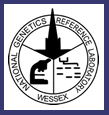1. The two pilot UK NEQAS trials have revealed considerable
variation in the performance of RQ-PCR for BCR-ABL. It is
currently unclear how much of this attributable to UK labs
and in the future it would be useful to separate out UK results
in order to (hopefully) monitor improvements over time. UK
NEQAS will perform further rounds and plans to introduce
a scoring system to enable poor performers to be identified.
2. As part of a European LeukemiaNet programme and other
parallel initiatives to promote better comparability of BCR-ABL
testing, NGRL (Wessex) will act as a central reference laboratory
for the UK and Ireland. Please can any lab that is interested
in establishing the International Scale for BCR-ABL contact
me (ncpc@soton.ac.uk) to arrange the initial exchange of
samples.
3. The survey revealed 20 labs in the UK and Ireland that
were performing RQ-PCR for BCR-ABL, with a further 4 labs
planning to set it up. As expected there was wide variation
in sample throughput, hardware and performance criteria.
Key findings were:
4. There is a clear need to develop best practice guidelines
for BCR-ABL testing that needs to go hand in hand with the
development of quality control materials. Best practice guidelines
should formally involve the BSH and CMGS and should be undertaken
with representative from all interested laboratories. Any
consideration of generic comments to be added to reports
should be undertaken in consultation with the NCRN CML working
group.
5. It was felt that it could be useful to develop QC rounds
in addition to those run by NEQAS as part of an improvement
and educational programme modelled on the European Biomed
and Europe against Cancer groups. It would make sense to
link this to the development of best practice guidelines.
6. The Adelaide laboratory routinely uses high and low BCR-ABL
standards to determine the validity of any run by applying
Westgard QC rules (see Adelaide QC.ppt; Westgard paper also
attached for anyone who is really keen). NGRL(W) agreed to
grow up a large batch of high and low standards for distribution
to labs in order to pilot this process in the UK. Hopefully
these reagents will be available in April-May this year.
7. The possibility of NGRL(W) sending out plasmids dilutions
was also discussed. There is some concern here about contravening
the EU IVD Directive but possibly this can be considered
as part of a performance evaluation process.
8. Rare BCR-ABL fusions are seen in about 1-2% of cases
and cannot be detected by standard primer sets. It seems
that most of these cases are not monitored by molecular methods
and many are not even picked up in the first place by appropriate
analysis of a pretreatment sample. It would be useful to
establish one or more designated centres that could monitor
patients with rare transcripts. If you are keen to do this
please let me know. If nobody else is keen then we can probably
do this in Salisbury.
9. Approximately 7 labs perform RQ-PCR for p190 BCR-ABL
and it would make sense to include p190 within the remit
of this group.
10. Most people consider that RQ-PCR follow up is most appropriate
once patients have achieved CCR as assessed by bone marrow
metaphase analysis. Assessments prior to CCR by RQ-PCR or
FISH on total leucocytes often produce misleading results.
This study will hopefully be written up by Mike Griffiths
in due course.
11. The European LeukaemiaNet is developing an RQ-PCR reporting
programme which should be available soon. Further details
from David Grimwade.
12. Nine labs currently perform of have just started BCR-ABL
mutation testing with at least four more planning to set
this up. All labs cover the entire region where mutations
have been reported to occur, either upfront or after eliminating
the presence of T315I. Development of controls for mutation
testing was felt to be unnecessary, at least at this stage.
13. There was a general consensus that the meeting was useful
and should be repeated once additional comparative data has
been collected (hopefully before summer 2008). Future meetings
will be held in London, probably at the Hammersmith Hospital,
and funding will be sought from the pharmaceutical industry
(this meeting was kindly supported by BMS). Details to follow
in due course.
